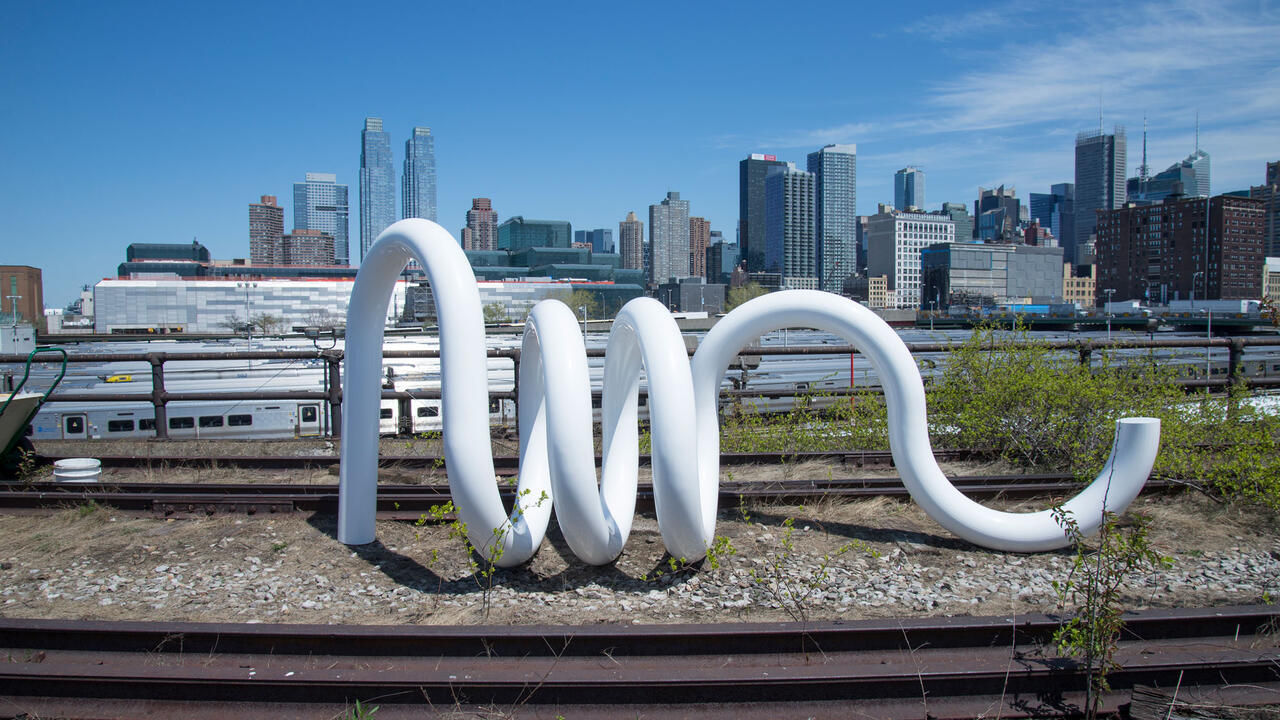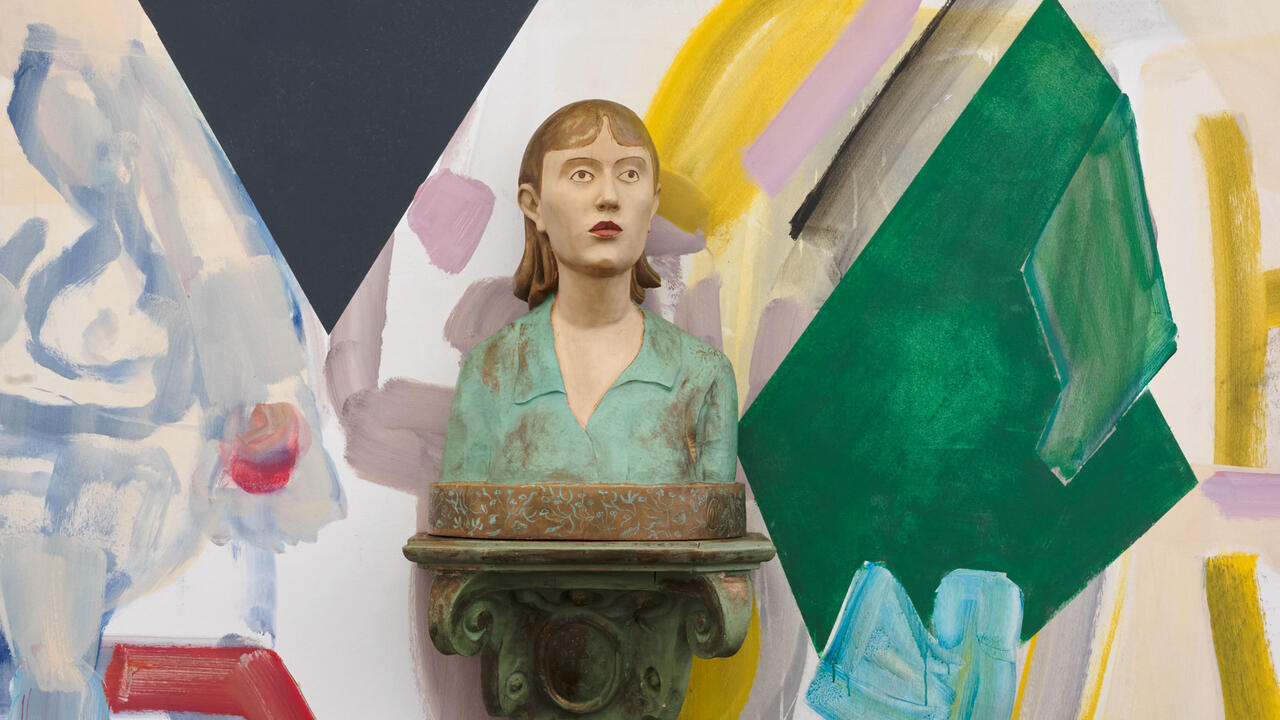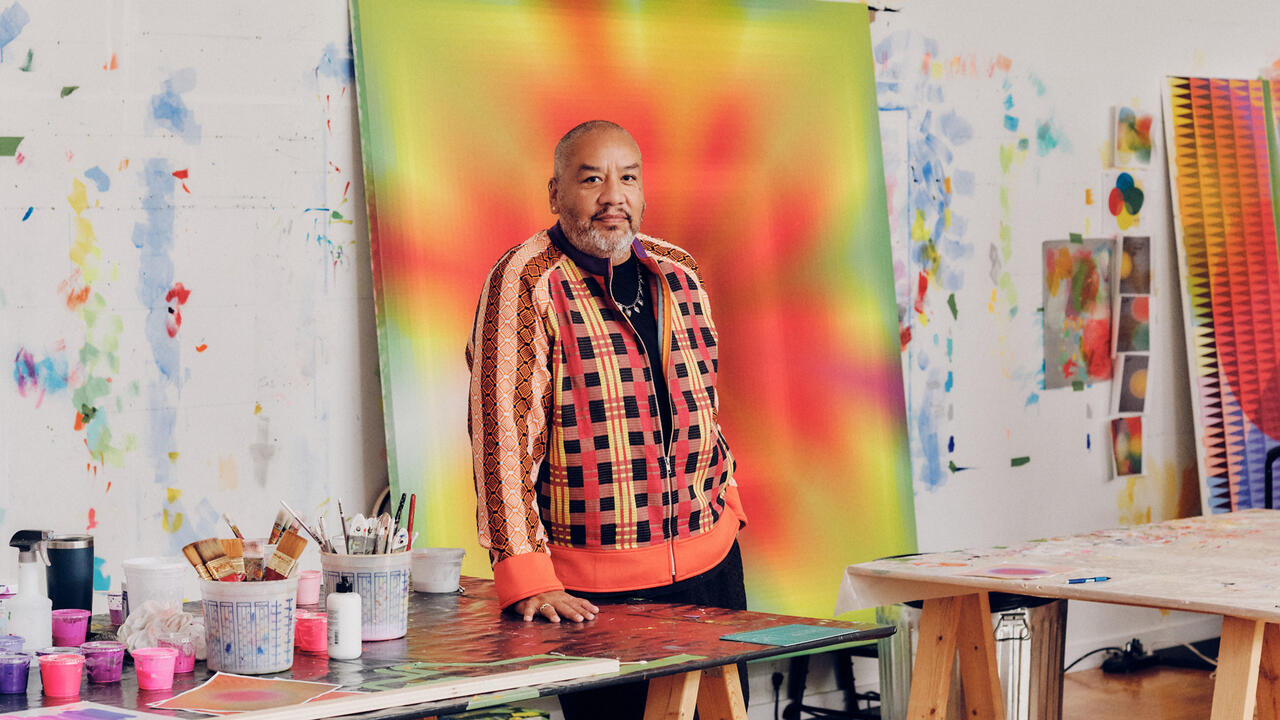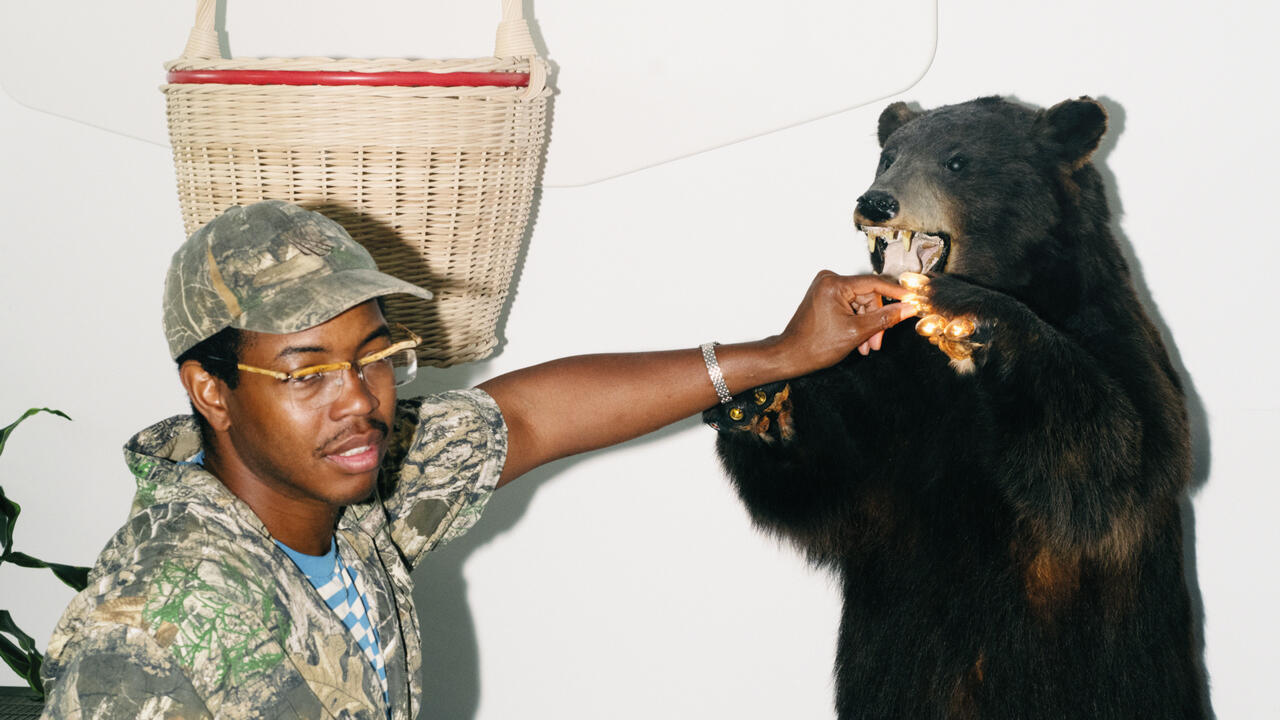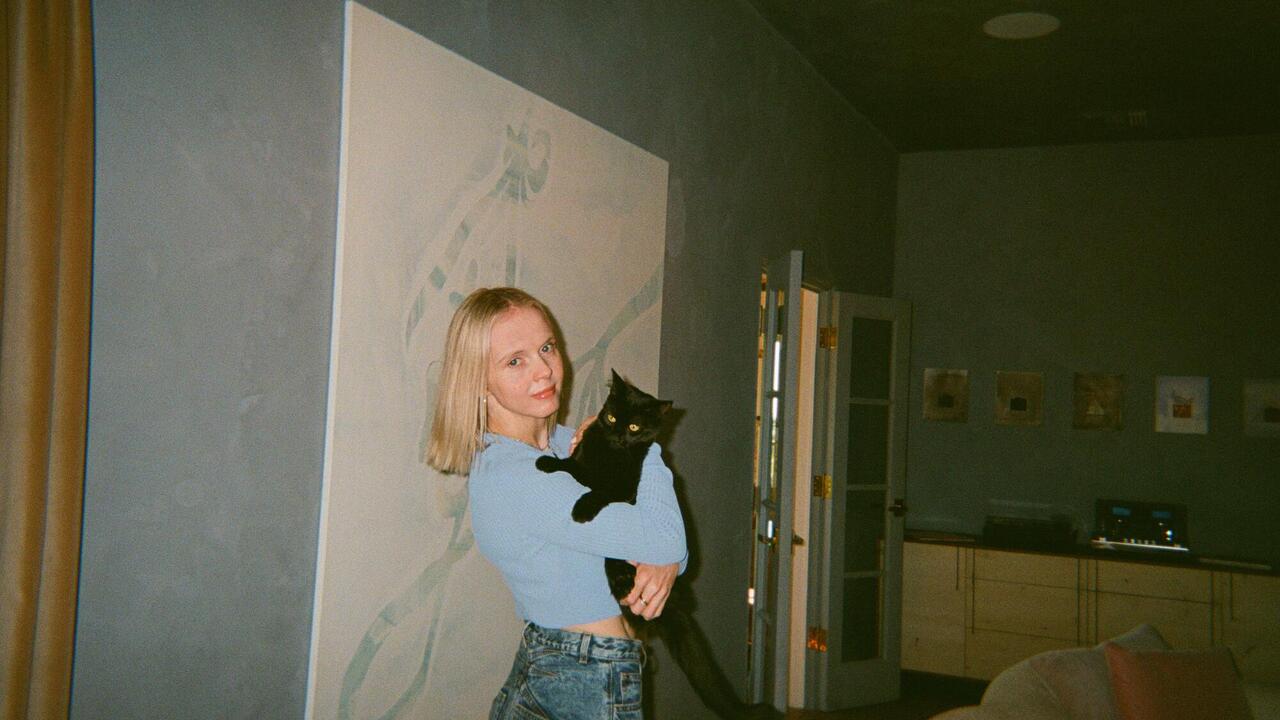Trading Places
On the eve of his first survey exhibition, Yoshua Okón talks to Magalí Arriola about Mexico, CIA covert ops, globalization and a derelict statue of George H. W. Bush
On the eve of his first survey exhibition, Yoshua Okón talks to Magalí Arriola about Mexico, CIA covert ops, globalization and a derelict statue of George H. W. Bush

Magalí Arriola ‘Miasma’, your recent show at Parque Galería in Mexico City, featured two key figures: Mexican journalist Manuel Buendía and former US president George H. W. Bush. Buendía was assassinated in 1984, the same year that he published La CIA en México (The CIA in Mexico), in which he cited the names of a number of agents and revealed a series of US undercover operations that had been taking place in Mexico at the time. Bush was director of the CIA before his inauguration in 1989 and, throughout his presidency, was one of the main advocates of the neoliberal polices that derived from the signing of the North American Free Trade Agreement (NAFTA). Can you say more about the role that these two characters play in your exhibition? Why do you feel they are still relevant when the current US administration, under Donald Trump, is threatening to dissolve NAFTA?
Yoshua Okón As you say, Buendía’s book reveals the hidden agenda behind the covert operations that US agents were implementing in Mexico. The author claimed that the CIA infiltrated the Mexican government in a bid to quash any regulations which might prevent the exploitation of the country’s natural resources by multinational corporations. Earlier this year, Mexico’s ‘Energy Reform’ bill – which was passed into law by President Nieto in 2014 without public consultation – finally came into effect. The reform effectively transfers energy resources from state ownership to private companies and, in the opinion of some analysts, is a major contributing factor in the economic and social crisis that the country is currently facing. This is exactly what Buendía predicted over 30 years ago, which is why I thought it was timely and relevant to revisit the issue.
In La CIA en México, Buendía devotes two chapters to Bush. Originally an oil businessman, Bush represented the neoliberal ‘new world order’: a paradigm in which governments increasingly tailored their actions to the needs of big business, often at the expense of public and environmental concerns. Consequently, corporations are not only above the law but also write it. In ‘Miasma’, I use the figure of Bush to point to neoliberalism’s imminent collapse – highlighting both the unsustainability of such a model and identifying it as the root cause of the environmental and societal catstrophe we are facing in Mexico and elsewhere. Trump is an indirect result – a terrible symptom – of such an irresponsible economic model.

MA It is interesting that a lot of the current criticism of neoliberalism – at least in the US – is actually coming from the right, from Trump and his supporters.
YO That’s true but, unfortunately, their reaction to neoliberalism is highly unproductive. The real issue is not globalization per se but the specific model of neoliberal globalization. Closing our borders just makes matters worse and ends up affecting the most marginal people – those who are already experiencing neoliberalism’s most negative effects. Being an opportunist, Trump has taken advantage of the widespread discontent with global capitalism at a time of historic inequality in the distribution of US wealth. He has harnessed the sentiment of millions who, rightly, feel that their government has abandoned them but, wrongly, believe that the answer lies in returning to a preglobalized model of nationalism, by blaming immigrants who, as we know, are victims of the same economic problems. When Trump threatens to dissolve the US trade treaties, he is clearly catering to that discontent. Trump’s alarming rise to power is definitely another reason why I feel this is still a relevant topic today.
MA Your film Miasma (2016), from which the show takes its name, has a dramatic tension that is quite distinct from any of your previous work. It features a derelict monument to Bush on a stormy night; the only living creatures nearby are bats and cockroaches.
YO This exhibition is about espionage and covert operations, about what is apparent versus what lies beneath. It is also about the sexy, polished image that consumer culture projects versus its dark underbelly. In other words, the visual language I use, both in the video and in the photographic sculptures, is a metaphor for the way neoliberalism operates, in which a shiny illusion of stability masks an unsustainable, destructive system. I deliberately filmed Miasma at night, both to evoke a romantic atmosphere and to allude to the corruption this monument represents. The only special effects I used during the shoot were a smoke machine and flashlights to simulate lightning and illuminate the statue’s face from below. Other than that, I left the site exactly as I found it, including the powerful natural soundtrack of the cicadas.

MA The apocalyptic scene depicted in Miasma is echoed in the gallery by the crumbling sculpture of Bush and the deconstructed figure of a bald eagle.
YO In the case of the sculptures, which are made by printing shiny photographic images on MDF panels cut with a router, there is a play between the illusionistic photographic surface and the material structure. The first sculpture, representing the crumbling Bush monument, retains the cracks that resulted when its parts were assembled, and the tension between surface and structure. The second sculpture consists of a group of pieces leaning against a wall in a line. These are meant to represent a ruin comprised of elements taken from various sources: the cover of Buendía’s book, bas-reliefs from the Bush monument depicting ‘key glorious moments’ in his life, and cockroaches found at the site. Both works are metaphors for the illusions of neoliberalism, in which the vision of a functioning system persists even when the structure itself is collapsing. My work combines allegory and poetics, even drama, with a rawness that grounds it in the everyday. I see the tension between these two different aspects – between artifice and document – as the basis of my practice. Stylistically, for instance, Miasma has very obvious cinematic qualities but it’s a portrayal of an actual historical character and was filmed at a real site in Houston.
MA Your forthcoming exhibition at the Museo Universitario de Arte Contemporáneo in Mexico City, curated by John C. Welchman and Cuauhtémoc Medina, will focus on world politics, engaging with themes such as capitalism, interventionism, race, migration and exploitation. It will provide a critical view on the representation of the cultural ‘other’, an issue closely linked to political history – particularly in the context of Latin America’s relationship to the US. Thematically, it isn’t tied to a specific country; rather, it will spiral – in Welchman’s words – through the American continent and beyond.

YO Analyzing national or regional paradigms in this age of global capitalism can be misleading. The works included in this exhibition refer to specific realities and places around the world as well as to how global forces are impacting them. It stresses the fact that, for the past 30 years or so, we have been operating under an increasingly globalized system in which our interdependency is greater than ever before. So, although the exhibition is engrained in specific geographical contexts, the spiralling that Welchman describes relates to the work’s emphasis on the global forces that bring about the local realities we experience.
MA Some of the older works that will be included in the show seem to have acquired new relevance since Trump’s election. I am thinking, for example, of Boca Negra (Black Mouth, 2007), which documents the racist fundamentalism of a Mexican neo-nazi brotherhood, or a work such as Oracle (2015), with its almost-visionary title, in which a self-organized, anti-immigrant militia from Arizona performs its hatred for the camera. Do you think the fact that these sub-cultures, which used to exist under the radar, have now become part of the official rhetoric of the Trump administration, will affect the conceptual strategies that you use?
YO I try to respond to the ever-changing world around me, so I’m certain the significant political shifts we have experienced recently will have an impact on my practice, both in terms of its emphasis and the strategies I adopt. In the past, I have made works that are critical of nationalism, but also ones that are disparaging of the perverse double standards and contradictions of a system that simultaneously opens borders for indiscriminate and unregulated corporate exploitation – of resources and cheap labour – yet closes them to people. It is still too soon to know how much of an impact Trump will have. Will he eventually align himself with the neoliberal establishment? Is his current rhetoric just theatre? Or is the neoliberal establishment really collapsing? It remains to be seen.
Main image: Yoshua Okón, Miasma (detail), 2016, video still. Courtesy: the artist and Parque Galería, Mexico City










